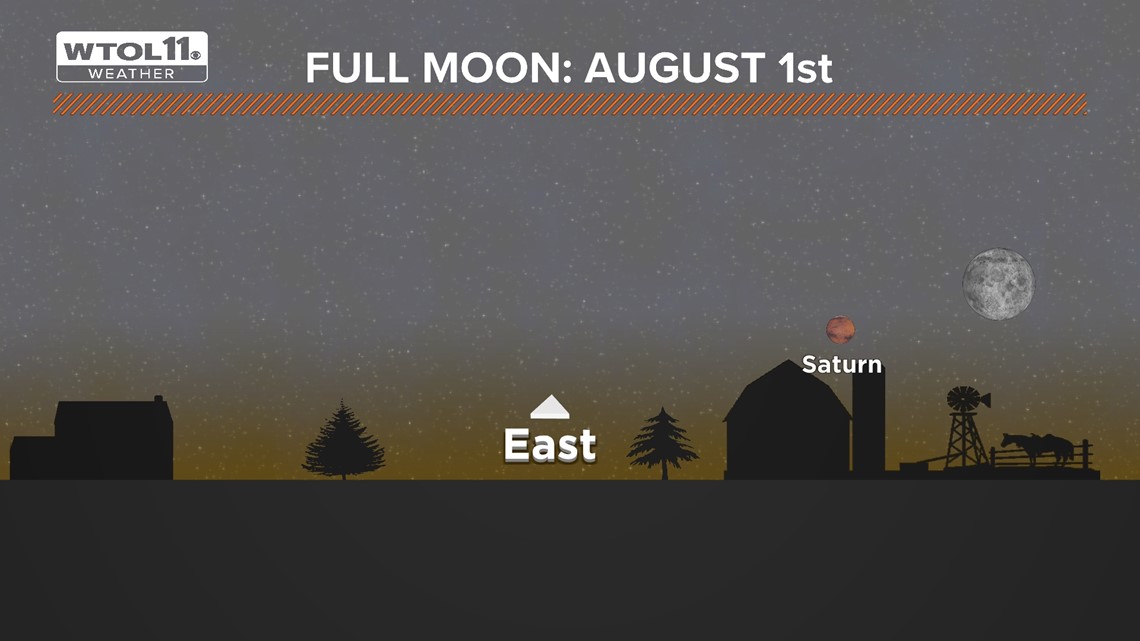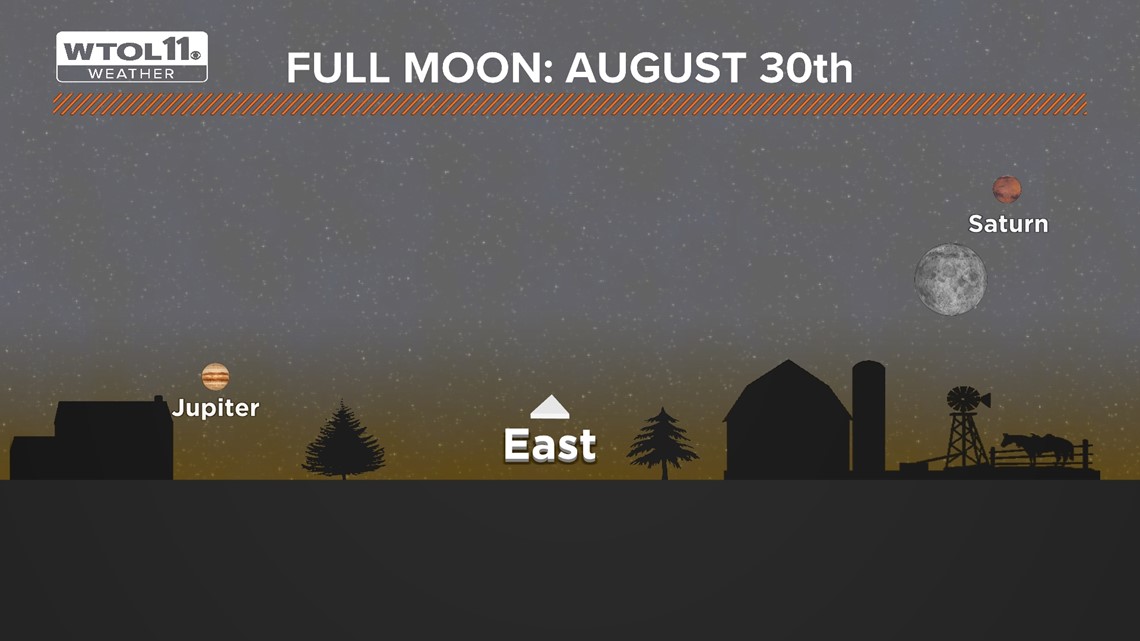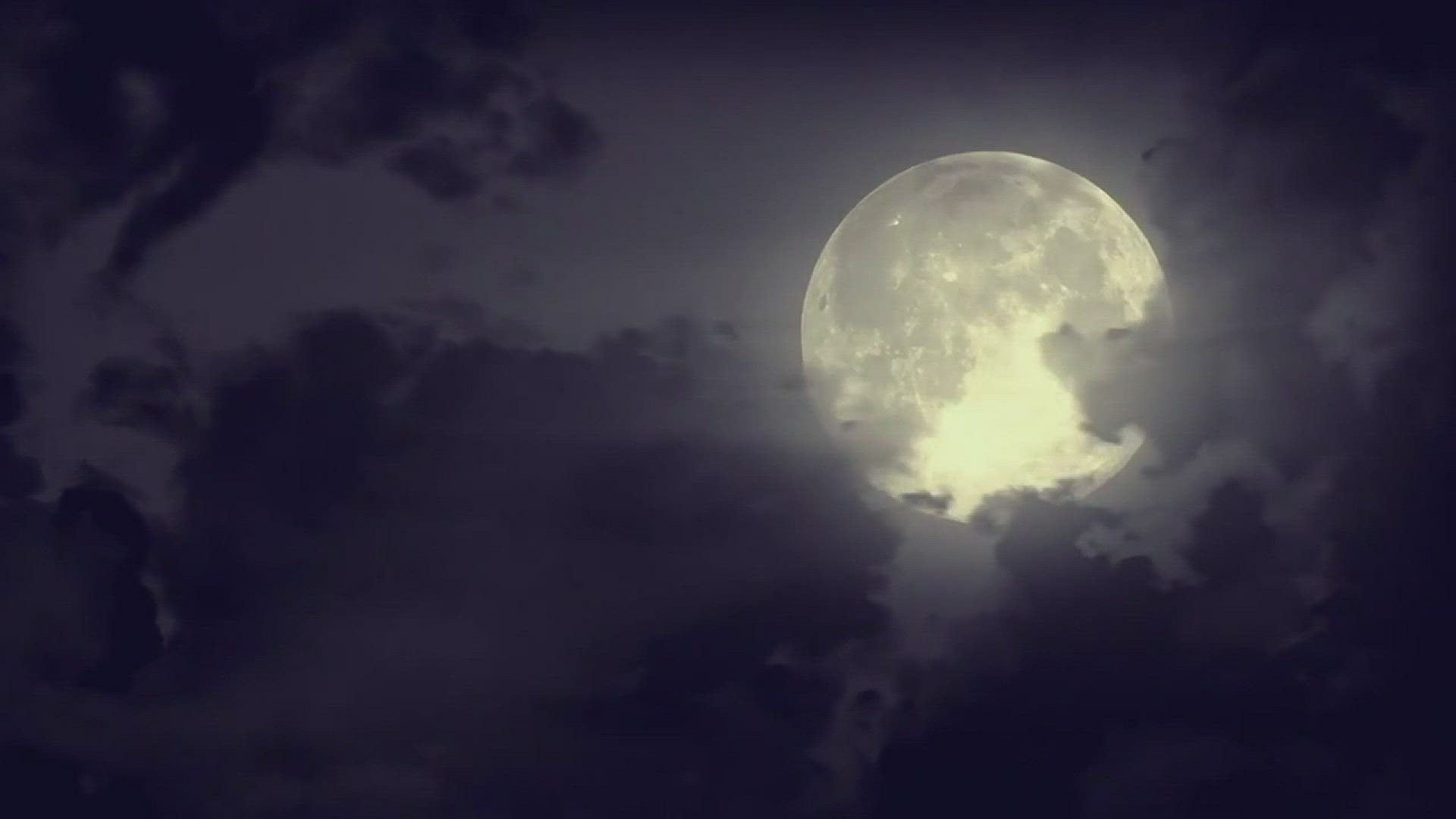TOLEDO, Ohio — While a "blue moon" isn't literally blue, the odds of it happening are pretty slim: only six of the 121 full moons since 2013 have been blue, meaning two full moons occurred during the same month. The odds of a supermoon are somewhat better, appearing three or four times per year. August 2023 is a unique month in that it will provide sky-watchers with not only two supermoons, but also a chance for a - literally - red blue supermoon for those in the Midwest receiving wildfire smoke in the atmosphere Tuesday.
Here's the why, when and where to look for this celestial phenomenon both Tuesday night and later this month.
A supermoon occurs when the full moon phase lands during the moon's perigee, or when it is at its closest point to Earth in its elliptical orbit. According to NASA, the moon's furthest distance from Earth is 253,000 miles, while its closest is about 226,000 miles. This makes the moon appear slightly larger and brighter than usual. It isn't an infrequent phenomenon, happening three or four times each year.
A blue moon is defined as two full moons occurring in the same month. Nothing special astronomically has to occur for this to happen, as it is dependent entirely on how we measure time - specifically months on the Gregorian calendar. Because Earth's moon orbits in a 27-day cycle, the full moon phase sometimes happens to land twice in one month. It cannot happen during the month of February.
Its rarity lends itself to the common saying: once in a blue moon.
Both full moons in August will also be super moons. The first full moon of the month lands Tuesday night. The moon will rise at approximately 9:45 p.m. in the southeast. By 11 p.m., it will be fairly high in the horizon, with Saturn to its left.


Tuesday's moon may provide even better views, as the color of the moon may appear reddish, especially close to the horizon.
Though wildfire smoke isn't necessarily something to celebrate, Tuesday will see heavy haze in the upper atmosphere, meaning it will affect the color of both the sun as it sets and the moon as it rises.
Light travels at certain wavelengths and the human eye interprets each of these wavelengths as specific colors. At sunset, the angle of the Sun with respect to the Earth means light has to travel a further distance to reach our eyes; the color red is represented by a longer light wavelength, which is why sunsets appear more colorful than sunlight at noon.
When you mix smoke and dust into the atmosphere, they exaggerate this phenomenon by blocking out shorter wavelengths, like blues and greens. This allows the longer wavelengths - red, orange and fuchsia light - to appear more vivid.
This also applies to the moon, which will be close to the horizon Tuesday night when it rises.
The second full moon of the month, the blue moon, will occur on Aug. 30, again while the moon is at perigee. It will appear somewhat higher in the sky after sunset, still to the southeast. You can also catch Saturn to its right, and Jupiter close to the horizon in the northeast.


Additionally, skies across northwest Ohio and southeast Michigan are expected to be mostly clear (barring wildfire smoke) Tuesday night meaning you'll have a good view of the moon.
If you see the supermoon, be sure to snap a photo of it and send it to the WTOL 11 Weather Team and Newsroom. On the WTOL 11 app, tap "Near Me" in the lower right-hand corner. Then press the orange "Share with Us" button in the upper left-hand corner of the map.
MORE LOCAL HEADLINES FROM WTOL 11

